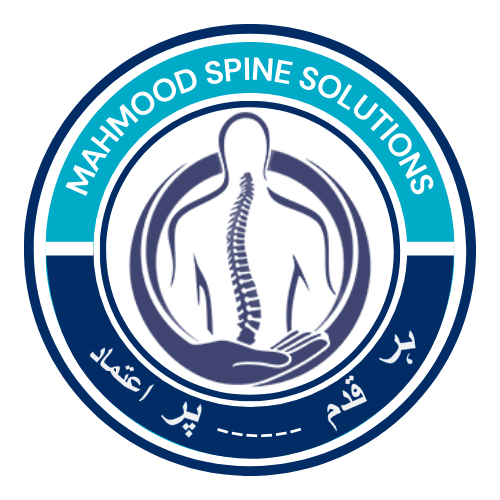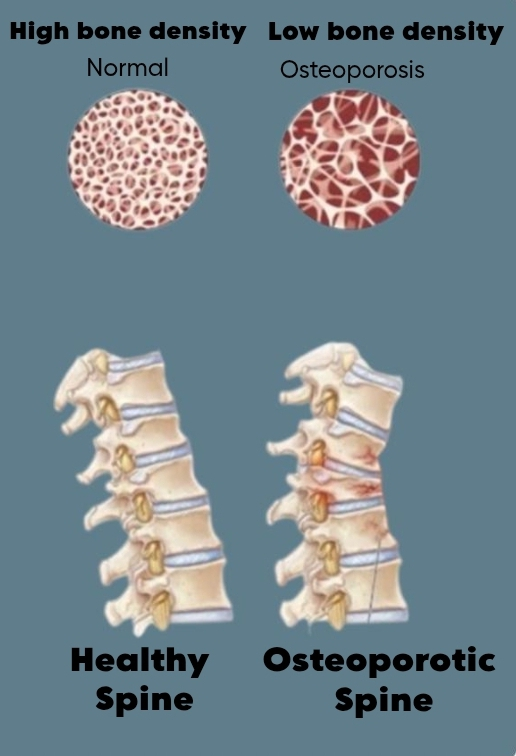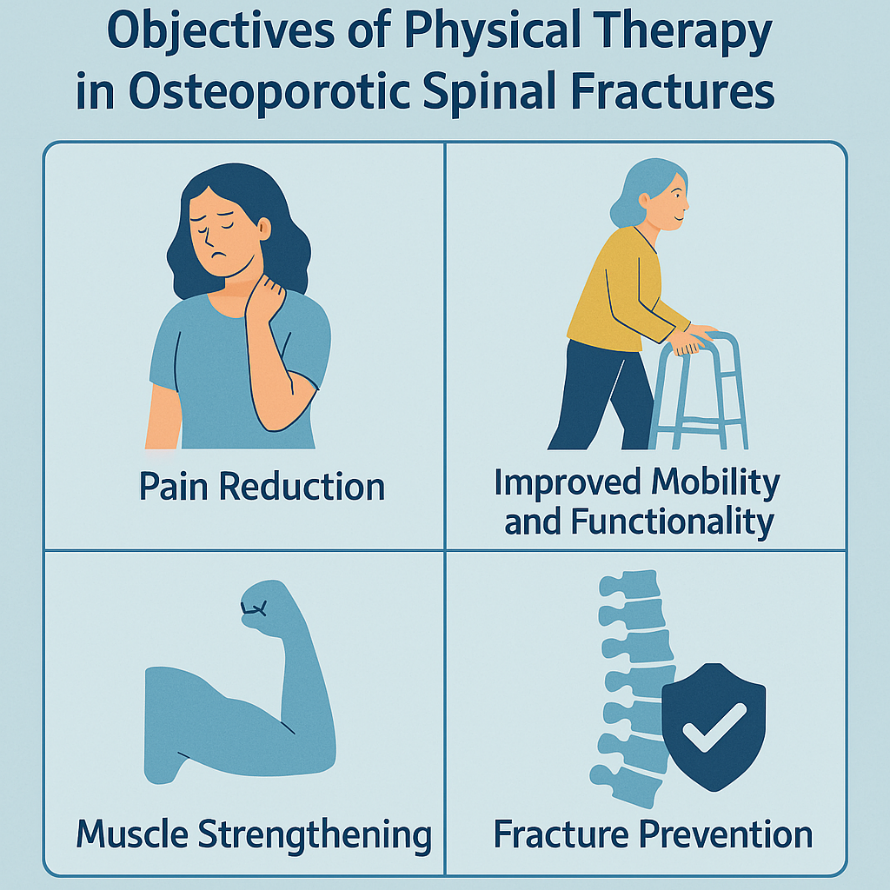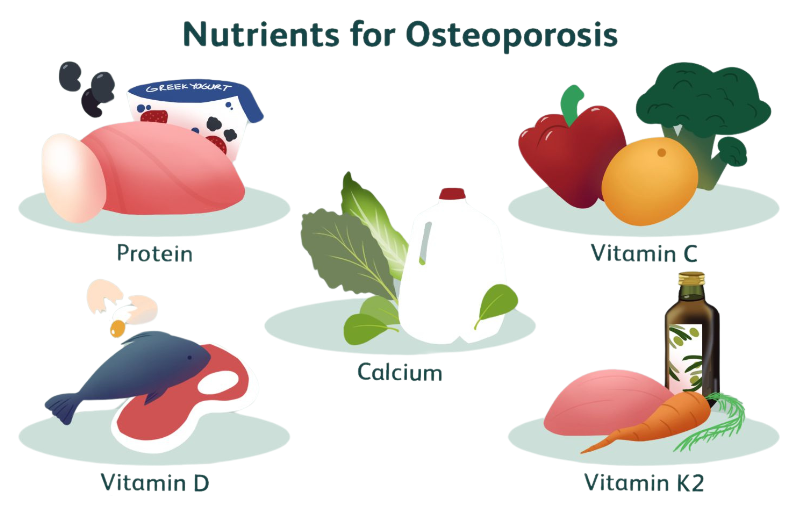Physical Therapy in Osteoporotic Spinal Fractures plays a vital role in managing the condition, which is a progressive bone disease characterized by reduced bone mass and deterioration of bone tissue, leading to increased fragility and susceptibility to fractures. One of the most common and debilitating complications of osteoporosis is vertebral compression fractures (VCFs). These fractures can cause significant pain, postural deformities, and loss of function, severely impacting a person’s quality of life. The role of physical therapy in managing osteoporosis-related spinal fractures is crucial, as it helps promote pain relief, improve mobility, strengthen muscles, and prevent further injury.
Objectives of Physical Therapy in Osteoporotic Spinal Fractures:
The primary goals of physical therapy in the management of osteoporosis-related spinal fractures include:
Pain Reduction: Alleviating discomfort through various therapeutic modalities.
Postural Correction: Enhancing spinal alignment to prevent excessive kyphosis and deformities.
Improved Mobility and Functionality: Restoring movement to enable daily activities.
Muscle Strengthening: Strengthening core and back muscles to provide better spinal support.
Fracture Prevention: Educating patients on safe movements and fall prevention strategies.
Physical Therapy Interventions
-
Pain Management Techniques:
Modalities: Heat and cold therapy to reduce inflammation and muscle tension.
Electrotherapy: Use of Transcutaneous Electrical Nerve Stimulation (TENS) for pain relief.
Manual Therapy: Gentle spinal mobilization techniques to enhance comfort and flexibility.
Bracing: Spinal orthoses may be used for support in severe cases.
-
Therapeutic Exercises:
Postural Exercises:
– Shoulder retractions to counteract kyphotic posture.
– Chin tucks to align the cervical spine and reduce forward head posture.
Strengthening Exercises:
– Core stabilization exercises to enhance spinal support.
– Back extensor exercises to improve posture and reduce the risk of fractures.
Flexibility and Balance Training:
– Stretching to maintain flexibility and reduce stiffness.
– Balance exercises to minimize fall risks, such as single-leg stance and tandem walking.
-
Functional Training and Ergonomic Advice
Gait Training: Assistance with proper walking techniques, including the use of assistive devices when necessary.
Body Mechanics Education: Training on proper lifting, bending, and posture to minimize spinal stress.
Daily Activity Modifications: Ergonomic adjustments to home and workplace environments to support spinal health.
-
Fall Prevention and Lifestyle Modifications
Home Safety Evaluations: Recommendations on minimizing fall hazards, such as removing loose rugs and improving lighting.
Nutritional Guidance: Encouragement of adequate calcium and vitamin D intake for bone health.
Weight-Bearing and Resistance Exercises: Low-impact exercises, such as walking and resistance band training, to maintain bone density and muscle strength.
Precautions in Physical Therapy for Osteoporotic Patients
Patients with osteoporosis require a cautious approach to physical therapy to prevent further fractures. Some key precautions include:
– Avoiding high-impact activities and excessive spinal flexion or twisting.
– Ensuring exercises are tailored to the patient’s pain tolerance and functional level.
– Monitoring patients for signs of discomfort or worsening symptoms during therapy.
Conclusion:
Physical therapy is an essential, non-invasive approach to managing osteoporosis-related spinal fractures. By focusing on pain relief, postural alignment, muscle strengthening, and fall prevention, physical therapy helps patients regain mobility, reduce the risk of further fractures, and improve their overall quality of life. An individualized, patient-centered approach ensures optimal outcomes and long-term spine health.
About Authors
Dr. Muhammad Mahmood Ahmad is a Spinal as well as an Orthopedic Surgeon with over 14 years of experience currently practicing at Razia Saeed Hospital, Multan.









